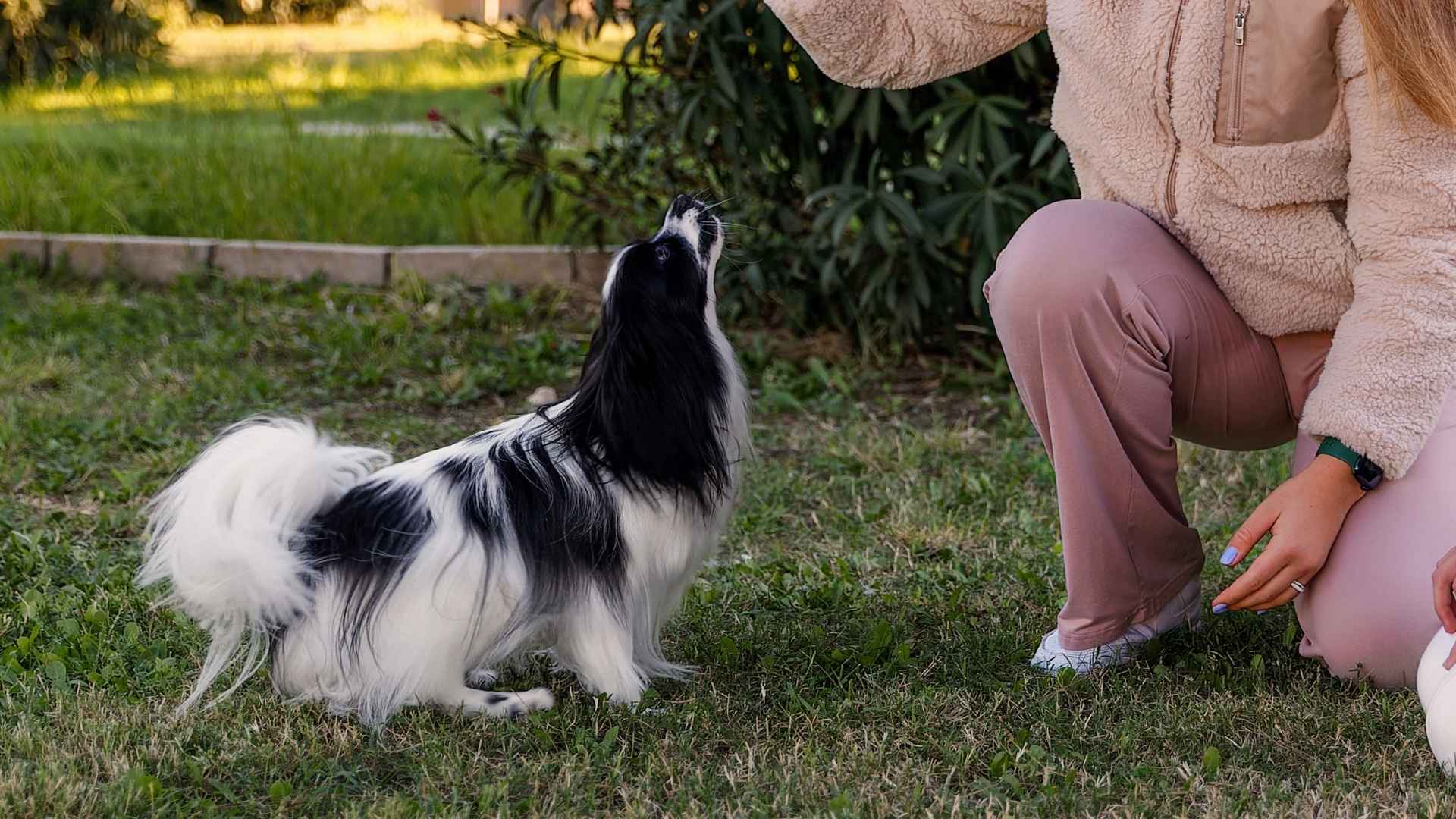You’re in the middle of a conversation. Your dog tilts its head, perks up, and then walks to the exact toy you mentioned, without a single gesture. No pointing. No cues. Just words.
Some dogs are smart like that. They don’t just respond to training—they absorb it. Living with one of these dogs can feel like having a roommate who listens more than they bark.
They remember, they react, and they connect dots; most pets don’t. These aren’t your average fetch-and-sit pups. They solve problems, notice patterns, and love the challenge of learning new things.
If you’ve ever dreamed of a dog who truly “gets” you, these breeds come close. What follows is a list of the smartest dog breeds out there—ones capable of learning more than 200 words, and maybe even understanding what you’re really trying to say.
Genius Dog Breeds That Can Learn Over 200 Words
1. Labrador Retriever
Labradors can recognize a large number of spoken words and link them to actions, people, or objects. Their ability to pick up vocabulary is one of the clearest signs of their intelligence. This is why they often respond quickly to multi-step commands in everyday situations.
Memory That Supports Real Learning
They remember word cues and behaviors learned over time, which helps them build a reliable response system. This skill plays a big role in their success as working or home companions. Consistency and positive interaction bring out their full cognitive potential.
Problem-Solving Without Prompting
Labradors often act based on previous experiences, such as locating items from voice cues or remembering routines. Their behavior shows an understanding of what is expected. This makes them more interactive and mentally alert throughout the day.
Highly Valued for Trainability
Their quick grasp of instructions has made them one of the most trusted and trainable dog breeds across roles, as per Pawlicy Advisor. From home settings to assistance work, they adapt with ease. This natural response to human communication makes them stand out clearly in this list.
2. Miniature Schnauzer
Miniature Schnauzers are quick to recognize spoken commands, word tones, and even short phrases. They respond well when instructions are tied to consistent actions. This clarity helps them build a strong base for learning new words over time.
Built-in Drive to Learn
Originally developed as working farm dogs, they were bred to observe and act with minimal prompting. This background supports their ability to follow structured training. They benefit most from clear routines and repeated verbal cues.
Guided by a Keen Sense of Awareness
These dogs stay highly alert to daily changes and environmental signals, as per PetMD. They react quickly to familiar sounds and gestures, helping them make connections between words and behaviors. Their awareness strengthens their ability to recall learned responses.
Quick, Curious, and Consistent
They respond to word repetition paired with action, especially during guided activities. Their curiosity pushes them to stay involved, while their need for structure keeps them consistent. This pairing allows them to learn and retain over 200 words through regular training.
3. Papillon
Papillons are known for their ability to understand spoken words and hand signals with impressive speed. They respond to new commands faster than many larger breeds. Their alert nature keeps them engaged during communication and training.
Eager to Learn and Repeat Tasks
They enjoy structured activities that challenge their memory and focus. From puzzle-solving to agility games, they stay sharp by repeating learned patterns. This behavior reflects how well this smart dog processes and retains information.
Well-suited for Skill-Based Training
Though small in size, they often take part in organized obedience trials and sport competitions. Their sharp instincts and high learning capacity make them suitable for advanced exercises. That’s also why they’ve been considered for light service roles.
Intelligence Beyond Basic Commands
Papillons are often described as clever problem-solvers in home environments. They can associate specific words with actions, places, or people. As a family dog, their ability to engage and respond consistently is part of what makes them stand out.
4. German Shepherd
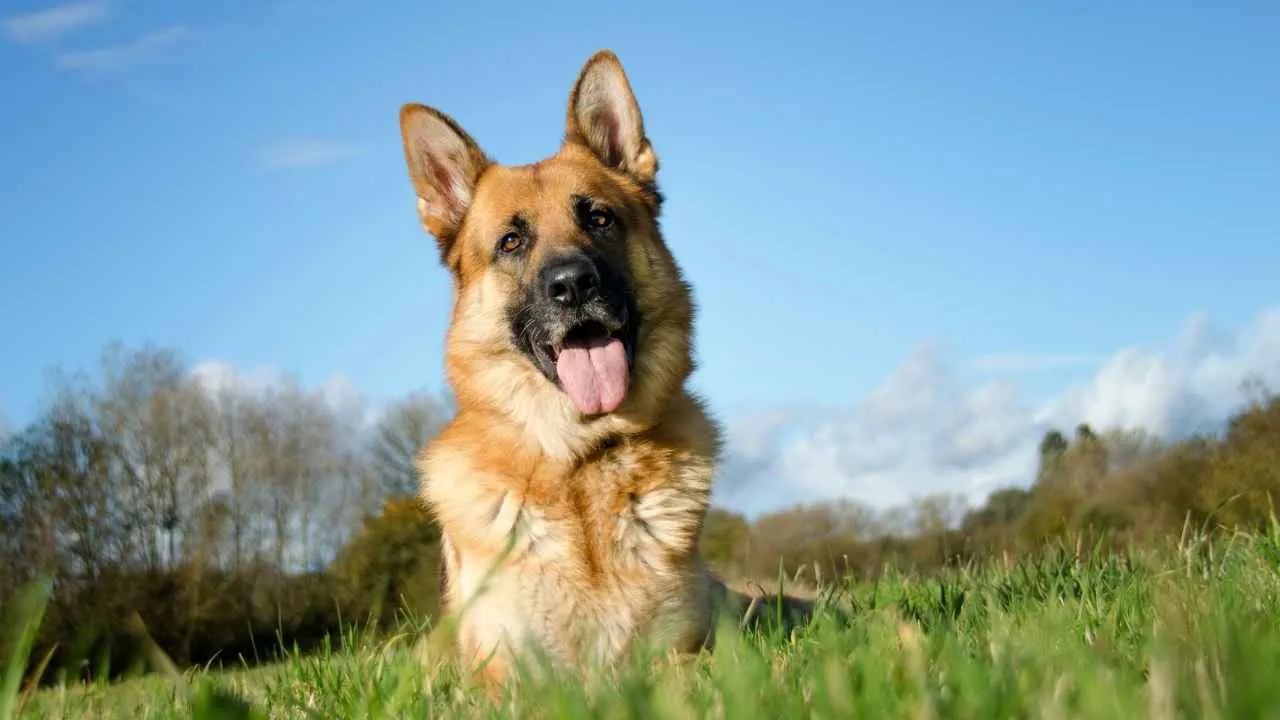
German Shepherds can retain and respond to a wide range of voice commands once taught with consistency. They often react with precision to both words and hand signals. This ability has made them a popular choice for high-level working roles worldwide.
Focus and Practical Understanding
They show clear recognition of spoken phrases tied to actions, places, or people in their routine. Their strong attention span supports reliable communication with handlers. This level of understanding builds over time with regular verbal interaction.
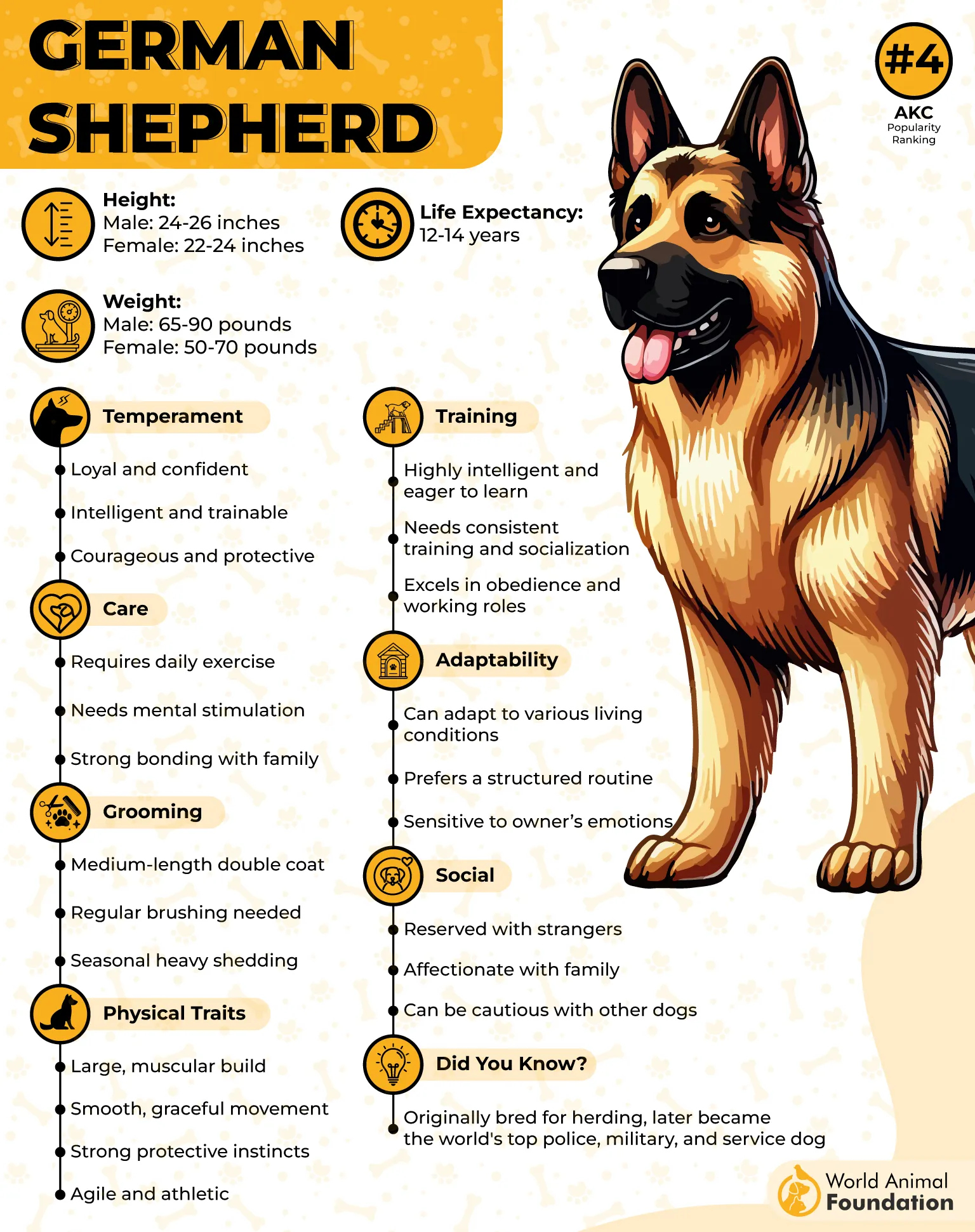
Natural Fit for Demanding Roles
Their quick processing of instructions allows them to work efficiently in various public roles. German Shepherds are often chosen as service dogs for individuals who need constant, intelligent assistance, as per the AKC. They perform tasks calmly even in noisy or unpredictable surroundings.
Driven by Purpose and Mental Stimulation
They benefit greatly from structured activities and problem-solving tasks throughout the day. Mental stimulation is essential to maintain their sharp focus and energy balance. In search and rescue missions, this drive helps them stay alert and task-oriented.
5. German Shorthaired Pointer
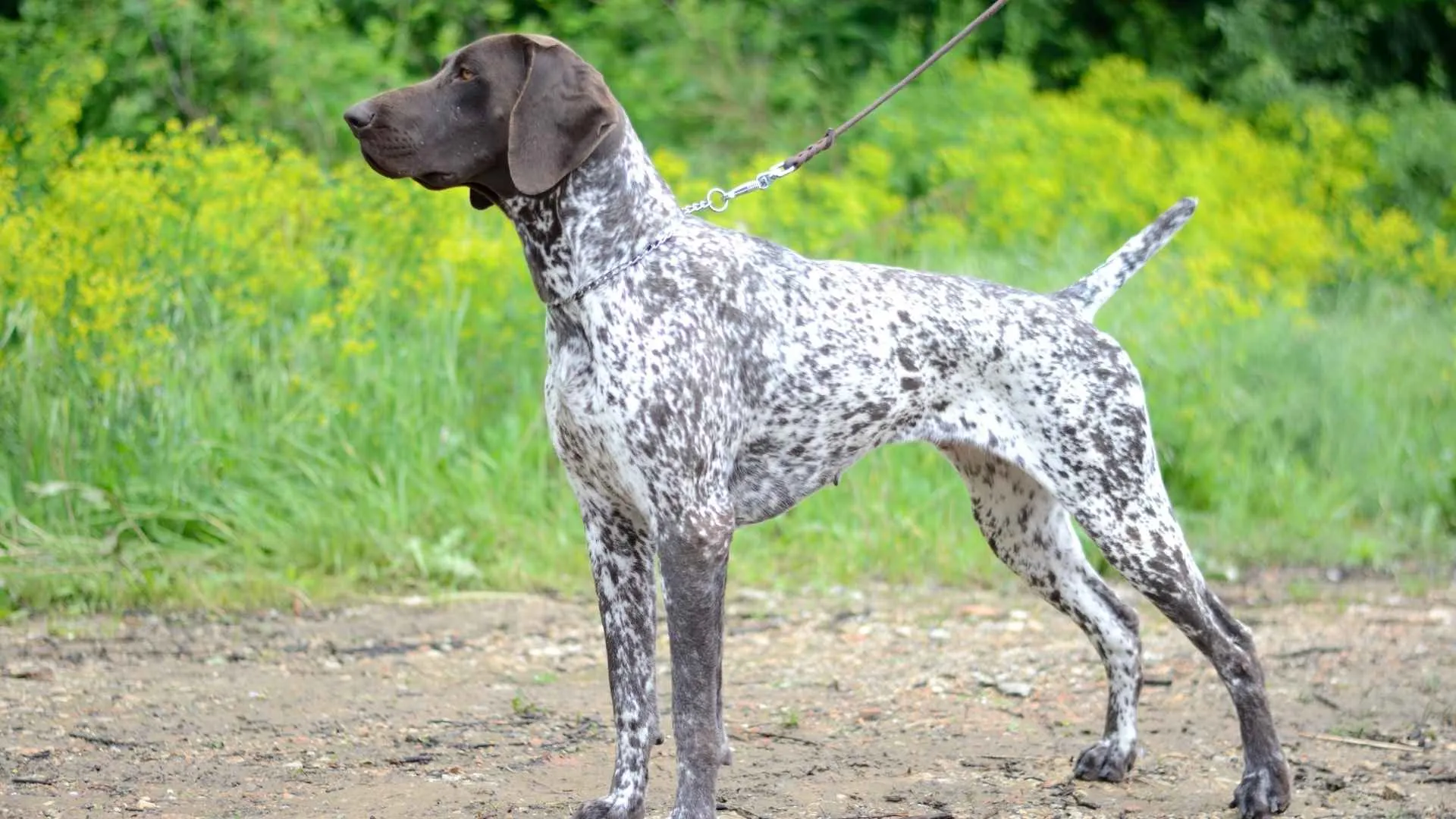
German Shorthaired Pointers can learn word associations quickly, especially when those words are tied to motion, objects, or direction. Their strong desire to stay engaged helps them stay alert to voice cues. This keeps their attention sharp during training or active routines.
Retention Built for Action
They remember commands linked to physical activity and respond with reliable consistency over time. This connection between movement and learning helps them process instructions naturally. Their mental energy stays focused when tasks involve structure or repetition.
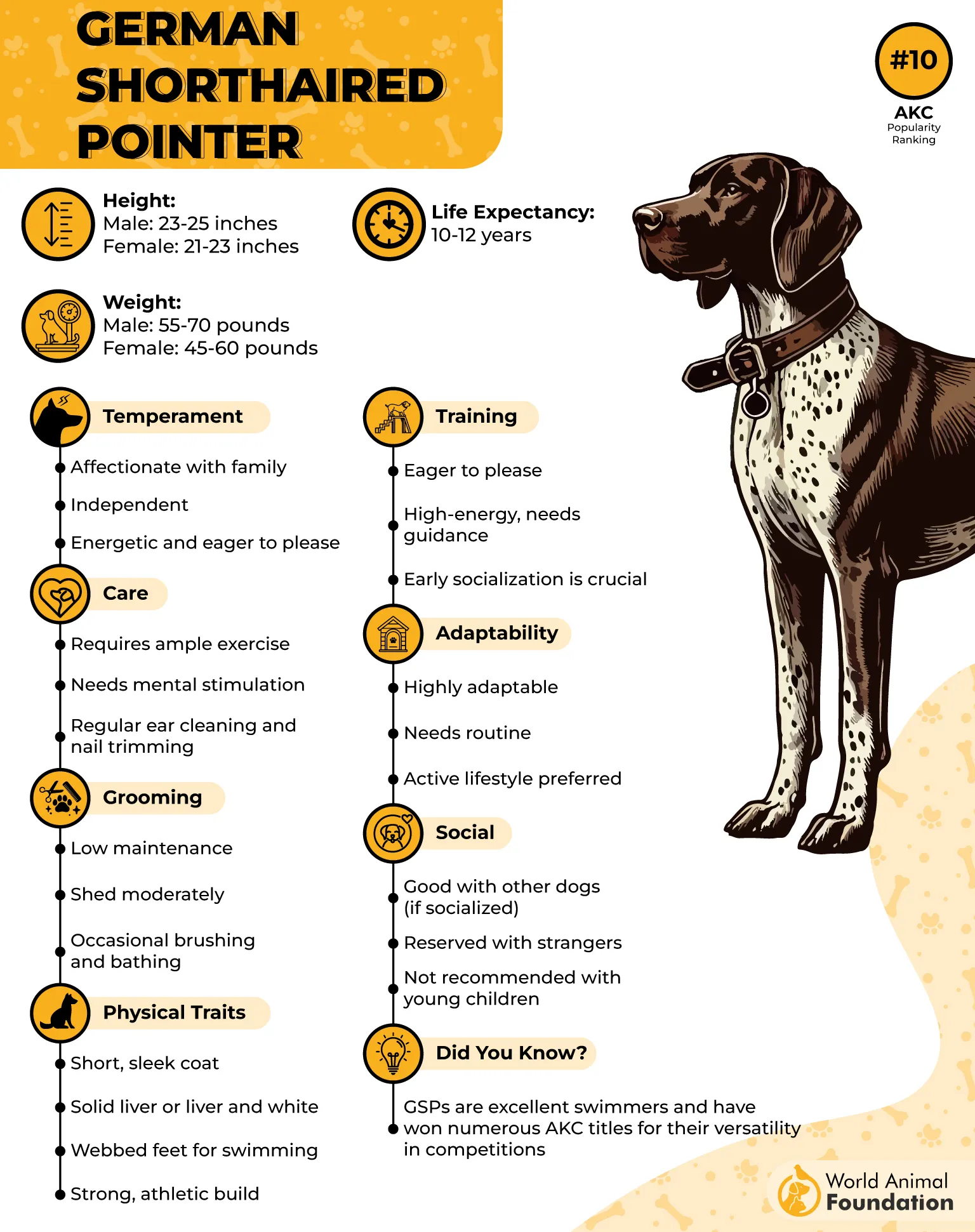
Working Intelligence in Daily Settings
Their background as hunters contributes to their ability to solve problems on the go. Whether tracking scents or responding to gestures, they act based on memory and purpose. This behavior often reflects how deeply they process routine experiences.
Eager Learners with Strong Focus
They show steady interest in task-based interaction and are known to perform well under guidance. This mindset helps them absorb new instructions through repetition and patience. Their combination of energy and concentration makes learning part of their daily rhythm.
6. Rottweiler

Rottweilers are capable of remembering detailed commands and routines, which is part of what supports their success in working roles. They respond well to structured direction and can store specific task sequences. This makes them suitable for mentally demanding environments.
Logical Thinking in Real Situations
They often make calculated movements, especially when navigating spaces or responding to changes around them. Their actions show awareness rather than reflex, making their responses more thoughtful. This quality becomes more visible during tasks requiring control.
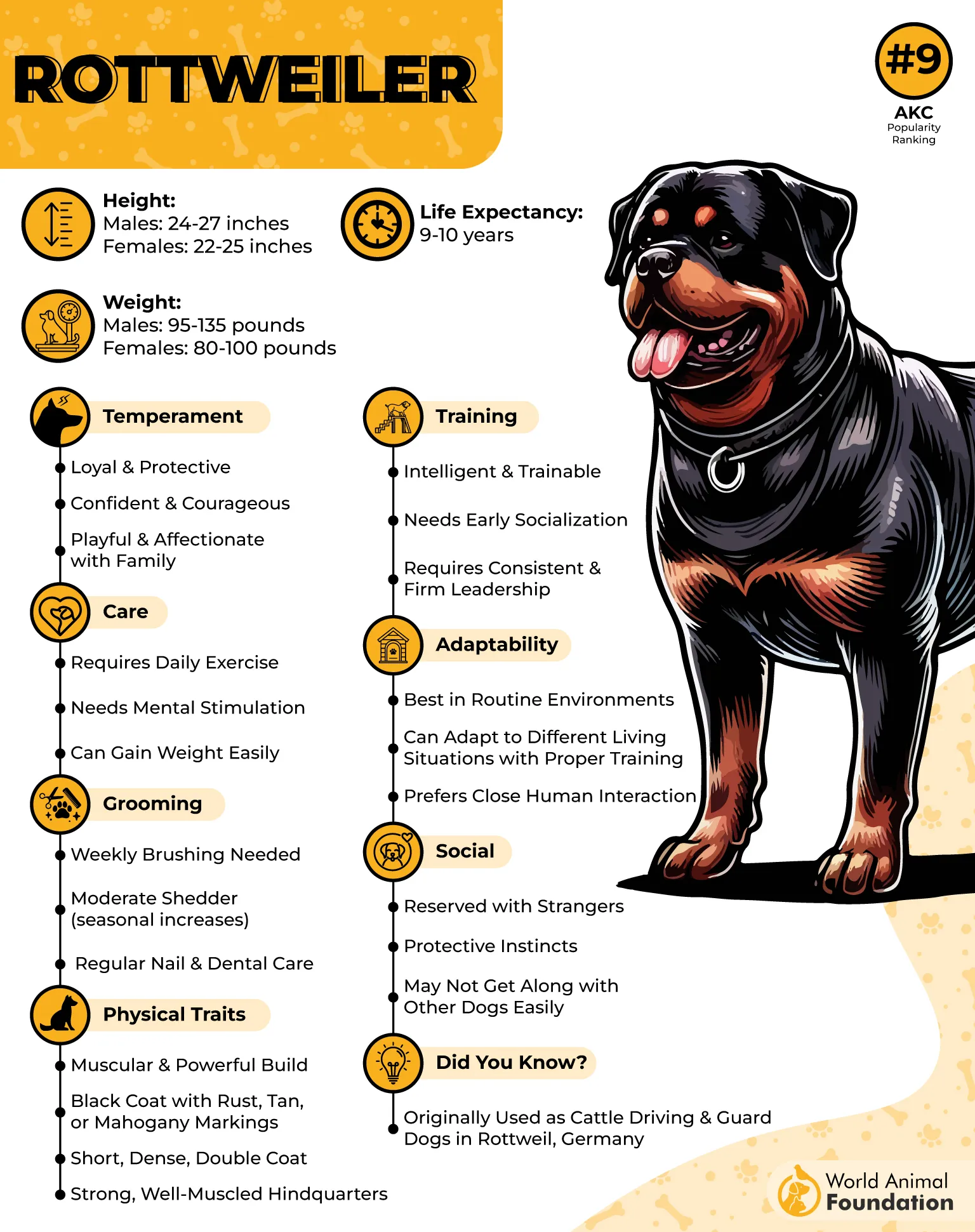
Excellent Performance Under Guidance
With consistent training, Rottweilers show impressive focus and reliability. They do especially well when mentally challenged with new commands or pattern-based cues. Many excel in obedience competitions, showing how their learning can be applied under pressure.
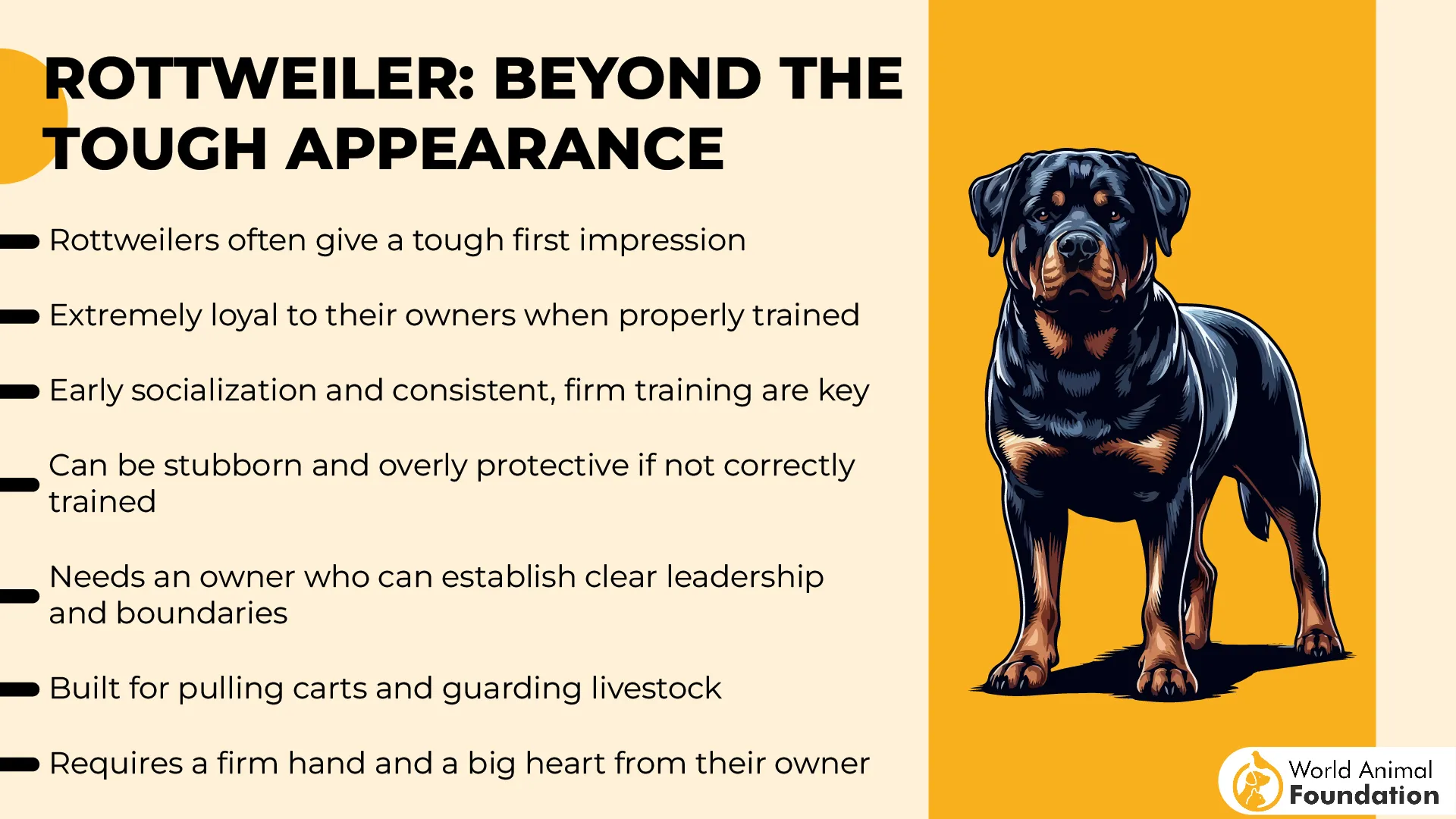
Trusted in Demanding Roles Worldwide
Rottweilers have long been selected for military and police work due to their mental discipline and ability to follow multi-step tasks. This has made them a trusted choice for professionals. Even pet parents benefit from their instinct to learn and perform.
7. Australian Cattle Dog
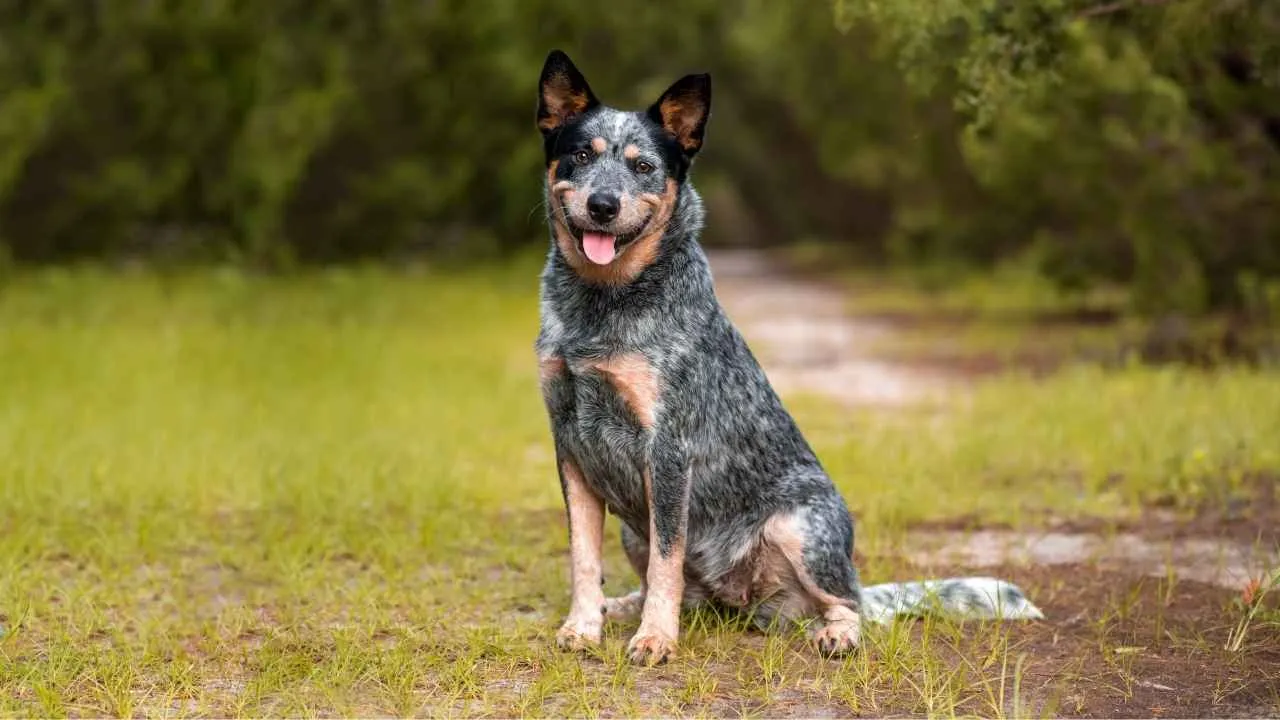
Australian Cattle Dogs are quick to connect spoken words with actions and tasks. They respond well to structured training that involves repetition and challenge. This clear understanding helps them carry out routines with strong reliability.
Retains Words and Cues Easily
They are capable of learning and recalling a wide range of voice commands with long-term accuracy. Their alert nature keeps them tuned in during instruction. This adds to the breed’s reputation among intelligent dog breeds.
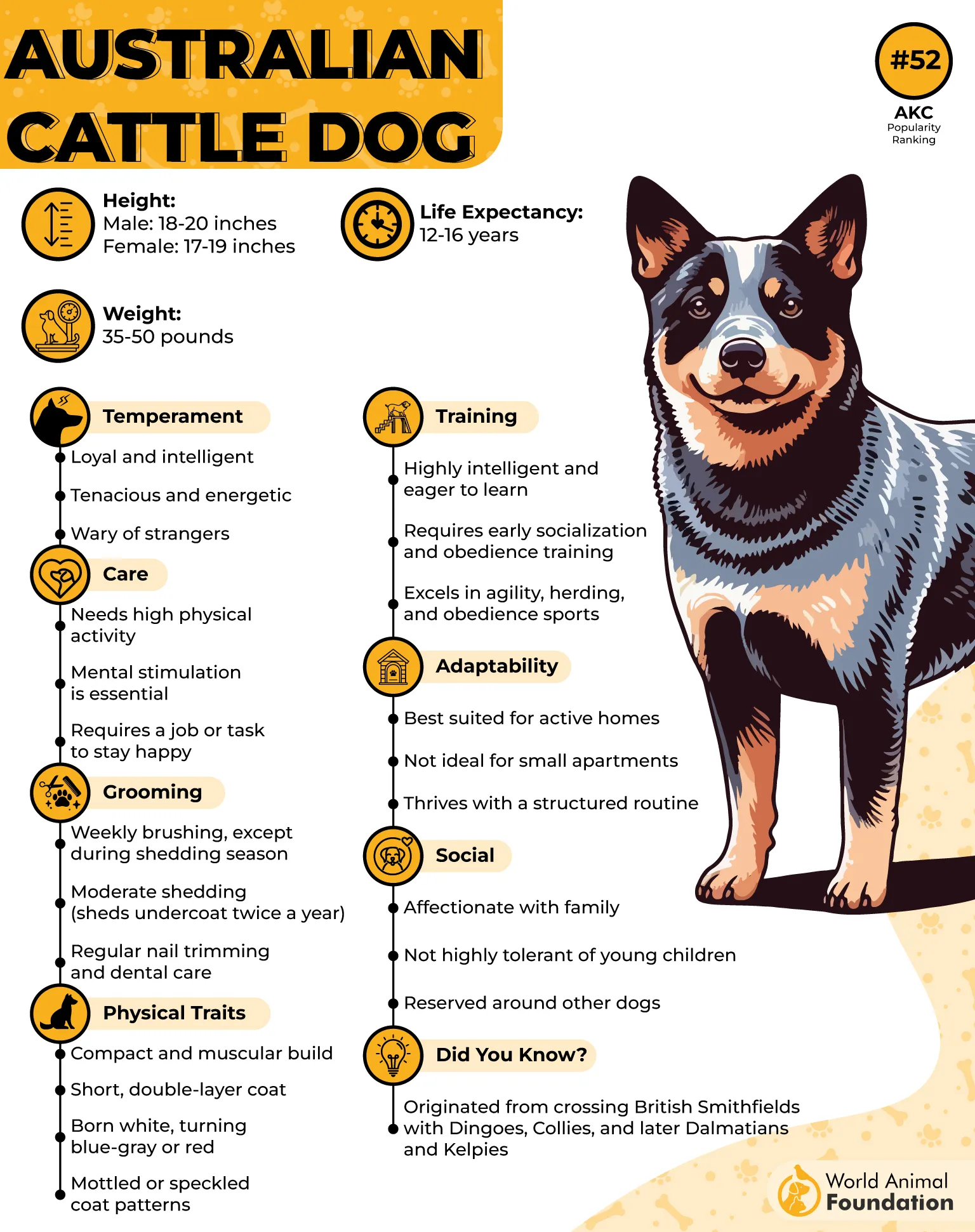
Uses Memory During Physical Activity
They often act based on memory when navigating familiar environments or herding spaces. That trait supports their success in both home and working settings. This shows the dog’s ability to stay mentally engaged even during high movement.
Strong Bond with Families
Though bred for work, they stay deeply connected to their people. Australian Cattle Dogs are known to be protective and dependable as family pets, as per Zealandia Pets. This connection allows them to read tone and body language without confusion.
8. Border Collie

Did You Know: A Border Collie named Chaser learned and retained the names of over 1,000 individual objects, making her one of the most documented cases of canine word comprehension.
Border Collies are known for their advanced ability to retain and act on a large vocabulary. They respond to word cues with remarkable consistency during both training and tasks. This makes them one of the smartest dog breeds in active roles and home life alike.
Independent Understanding of Tasks
They often carry out instructions without constant repetition, remembering steps and locations from previous interactions. This behavior reflects how well they connect words to action. Their sense of routine is sharpened by both instinct and mental alertness.
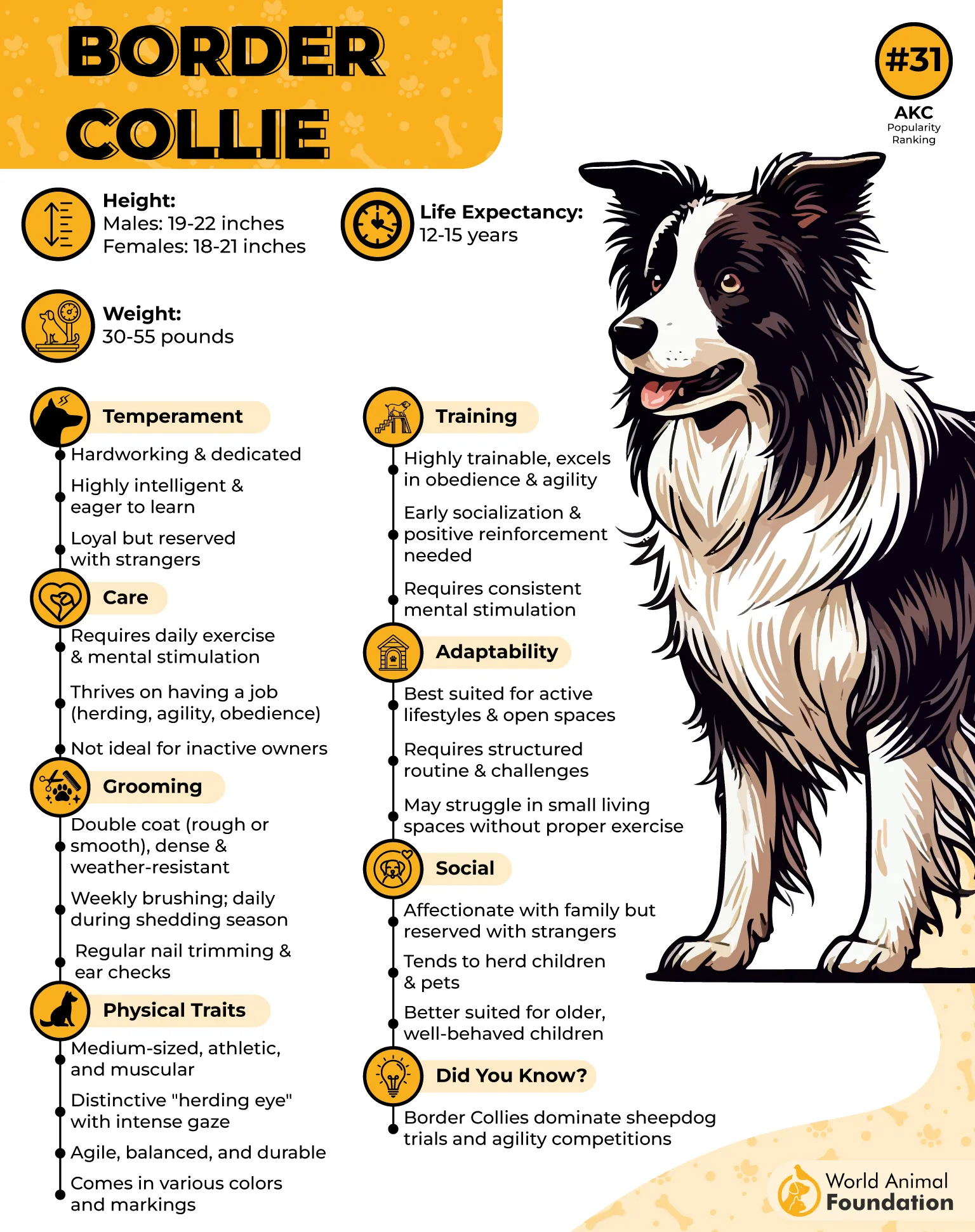
Natural Problem-Solvers in Motion
As a herding dog, the Border Collie applies reasoning while managing movement and space. This same intelligence shows up in games, puzzles, and home settings. Their need for mental stimulation is high, and it brings out their full learning potential.
Top Performers in Canine Sports
They have an impressive record in agility competitions, where speed meets precision, and word response is key. Their training is often smooth and fast because of their sharp learning curve. Many consider them one of the most trainable dogs to work with.
9. Golden Retriever

Golden Retrievers are known for linking spoken commands to physical responses with ease. They often pick up multiple words when used consistently by their owners. This ability helps them respond quickly in homes, training classes, and therapy settings.
Great Focus During Training Sessions
They pay attention to tone, gestures, and word cues without getting distracted easily. This focus helps them learn both single commands and sequences of actions. Repeated exposure through obedience training strengthens their memory and reliability.
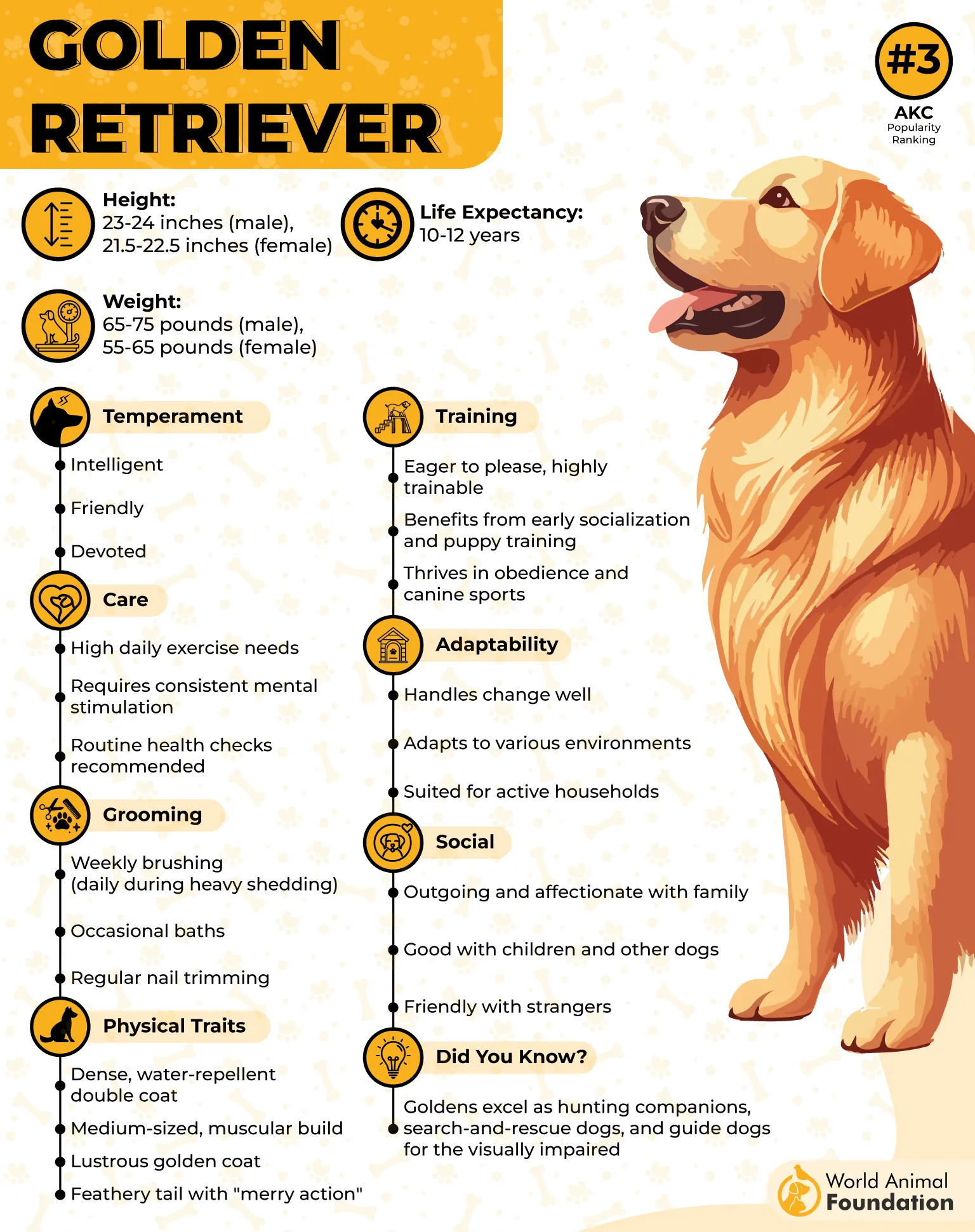
Understanding Rooted in Social Intelligence
Golden Retrievers often react to familiar names, phrases, or instructions with immediate comprehension. Their response to human language feels smooth and natural. It’s this connection that helps them work closely with children, seniors, and handlers alike.
Playfulness That Supports Learning
Their playful nature makes training feel more like a game than a task. They enjoy repetition, interaction, and reward-based learning methods. This attitude helps them retain commands faster and makes them easier to engage during daily activities.
10. English Springer Spaniel
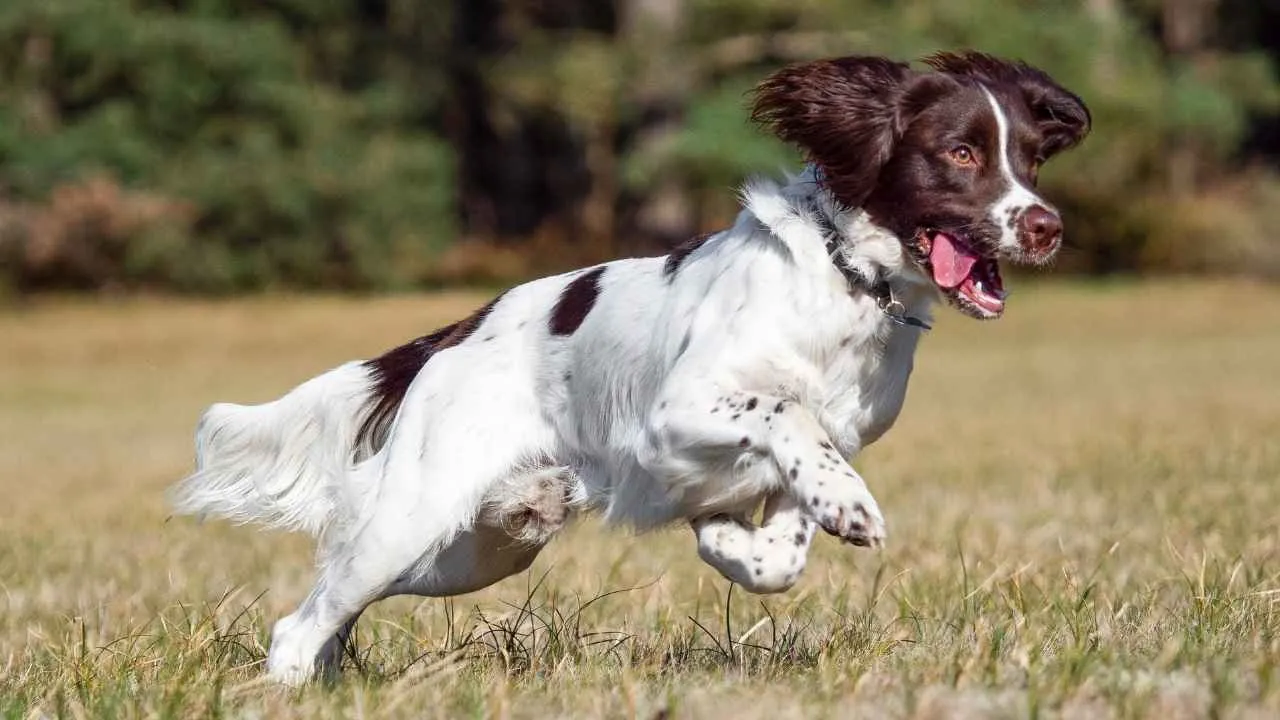
English Springer Spaniels often learn commands rapidly when training is consistent and engaging. Their responsiveness to voice instructions makes communication easy in real settings. This quality places them among certain breeds recognized for high working intelligence.
Energy That Supports Mental Sharpness
Their active lifestyle is directly tied to their ability to stay focused and alert. Regular physical exercise helps channel their drive into learning and following instructions. Without it, their energy can shift into restlessness that affects their attention span.
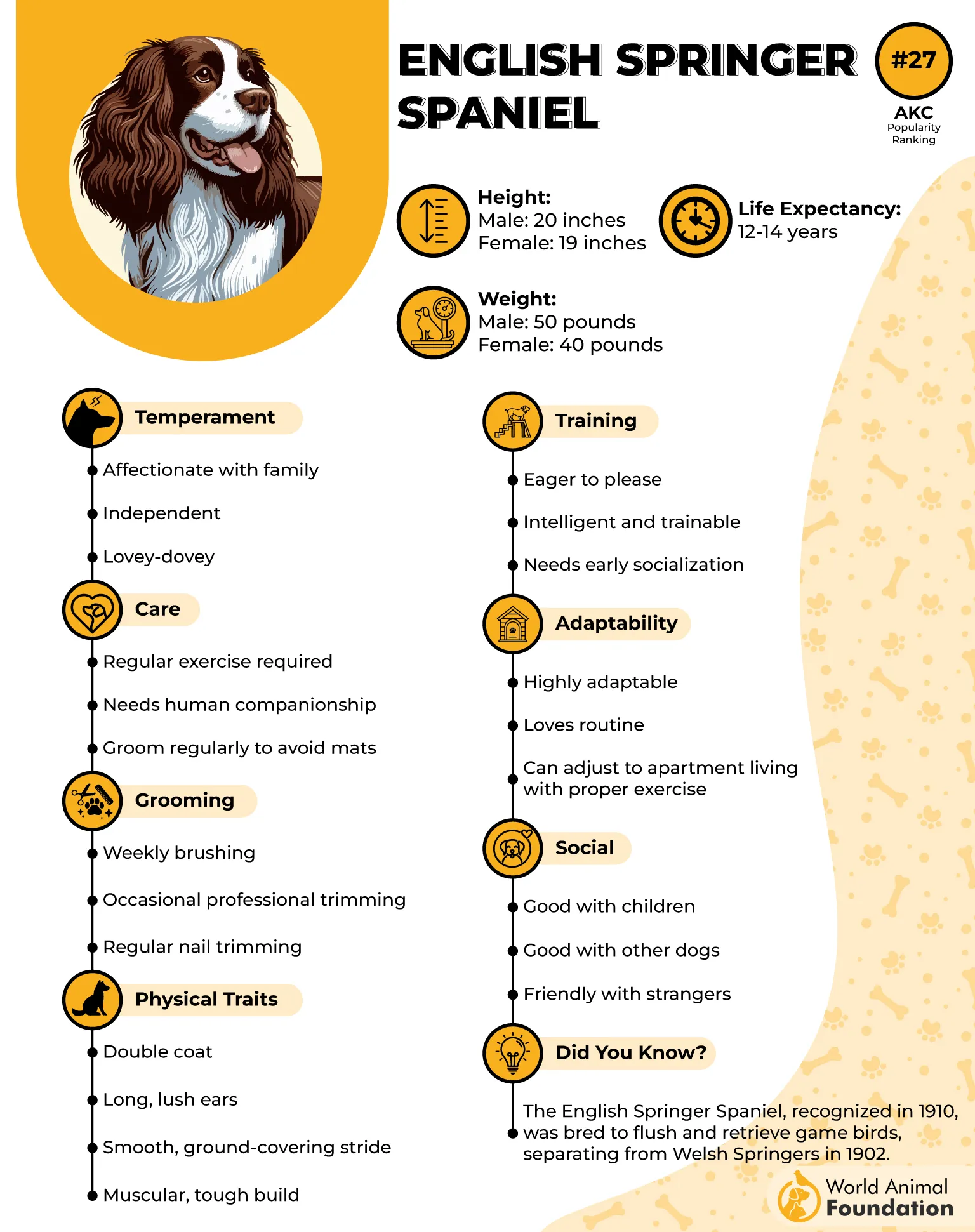
Instinct to Follow Complex Tasks
Originally bred for flushing and retrieving game, they still carry a strong sense of cooperative work. They respond well to layered commands and environmental changes during activity. This keeps their brain engaged even outside formal training.
Motivated by Praise and Routine
They thrive on feedback and consistency, often repeating learned behaviors just to please their handler. This motivation helps them retain both new and old commands with ease. When structured well, they perform better than many would expect.
Conclusion
Some dogs just go beyond obedience. They listen, remember, and think things through. These breeds are more than companions; they’re minds in motion. With exceptional problem-solving skills and sharp focus, they thrive in both everyday life and advanced roles.
Whether supporting as therapy dogs, working alongside handlers as search and rescue dogs, or leading in dog sports, they adapt and shine. Known among the most trainable dog breeds, these dogs turn learning into connection.
Their sense of dog intelligence doesn’t just come through tasks—it’s in the way they bond with their family members. For anyone drawn to depth, loyalty, and understanding, these breeds offer more than companionship; they offer insight.


